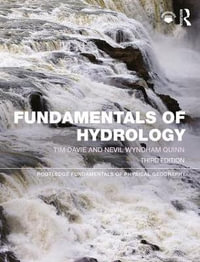
Sturgeon biodiversity and conservation
By: Vadim J. Birstein (Editor), John R. Waldman (Editor), William E. Bemis (Editor)
Hardcover | 31 May 1997 | Edition Number 48
At a Glance
Hardcover
$349.17
Aims to ship in 7 to 10 business days
ISBN: 9780792345176
ISBN-10: 0792345177
Series: DEVELOPMENTS IN ENVIRONMENTAL BIOLOGY OF FISHES
Published: 31st May 1997
Format: Hardcover
Language: English
Number of Pages: 448
Audience: General Adult
Publisher: Springer Nature B.V.
Country of Publication: NL
Edition Number: 48
Dimensions (cm): 27.64 x 20.32 x 2.54
Weight (kg): 1.23
Shipping
| Standard Shipping | Express Shipping | |
|---|---|---|
| Metro postcodes: | $9.99 | $14.95 |
| Regional postcodes: | $9.99 | $14.95 |
| Rural postcodes: | $9.99 | $14.95 |
How to return your order
At Booktopia, we offer hassle-free returns in accordance with our returns policy. If you wish to return an item, please get in touch with Booktopia Customer Care.
Additional postage charges may be applicable.
Defective items
If there is a problem with any of the items received for your order then the Booktopia Customer Care team is ready to assist you.
For more info please visit our Help Centre.
You Can Find This Book In
This product is categorised by
- Non-FictionEngineering & TechnologyAgriculture & FarmingAquaculture & Fish-Farming Practice & Techniques
- Non-FictionIndustry & Industrial StudiesPrimary IndustriesFisheries & Related Industries
- Non-FictionEarth Sciences, Geography, Environment, PlanningThe EnvironmentApplied EcologyBiodiversity
- Non-FictionNature & The Natural WorldDomestic Animals & PetsFishes, Crustaceans & Aquaria
- Non-FictionNature & The Natural WorldWildlife in GeneralWildlife & Aquatic CreaturesFreshwater Life
- Non-FictionNature & The Natural WorldDomestic Animals & PetsReptiles & Amphibians as Pets
- Non-FictionScienceBiology, Life SciencesLife Sciences in GeneralEcological Science
- Non-FictionScienceBiology, Life SciencesHydrobiology
- Non-FictionScienceBiology, Life SciencesZoology & Animal SciencesZoology & VertebratesFishes & Ichthyology
- Non-FictionEarth Sciences, Geography, Environment, PlanningThe EnvironmentConservation of The Environment























